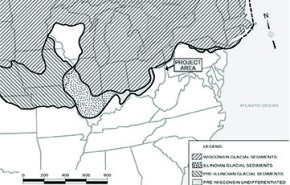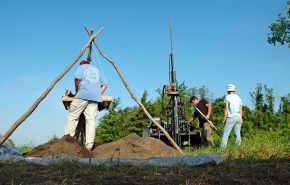Abstract | Micromorphology samples from Cotiga Mound (ca. 2100 yr B.P.) reveal distinct microstructures associated with mound construction and post-construction pedogenesis of the mound materials. The interface between layers of basketloads displays sharp, irregular contacts with little to no evidence of pedoturbation, suggesting rapid construction. Evidence of clay and iron translocation, along with well-preserved charcoal fragments containing identifiable cell structure were observed in samples collected from hearth features. Both the prepared surface and associated central burial feature at the base of the mound have a complex microstructure, characterized by charcoal layers and zones of clay accumulation, along with microstratification in the prepared surface. Clay translocation, formation of a complex void network, and iron manganese accumulation were the dominant pedogenic processes that modified the completed mound. © 2005 Wiley Periodicals, Inc.
November 22, 2004


